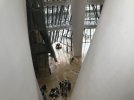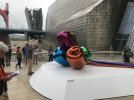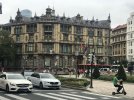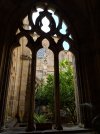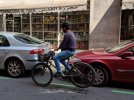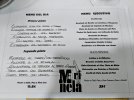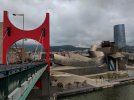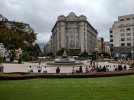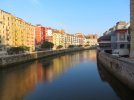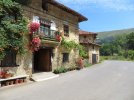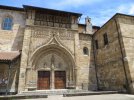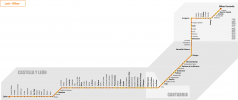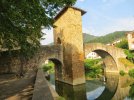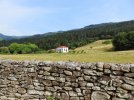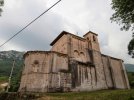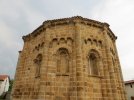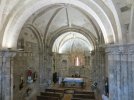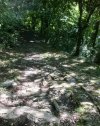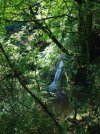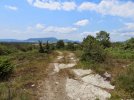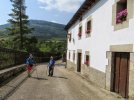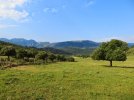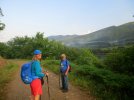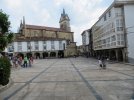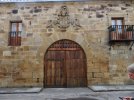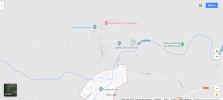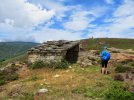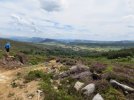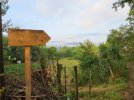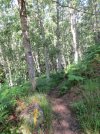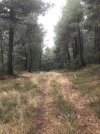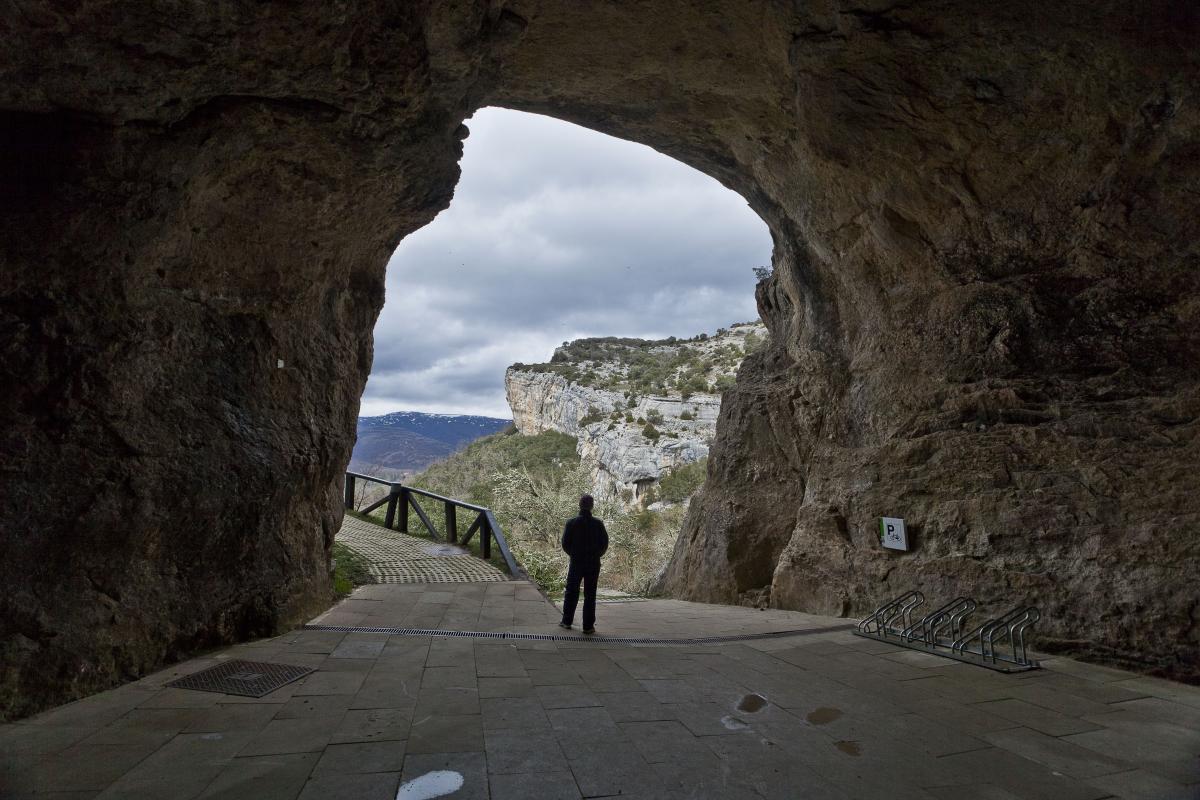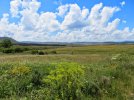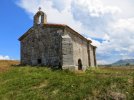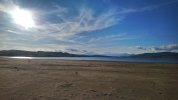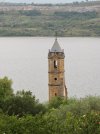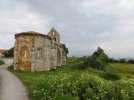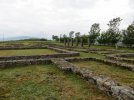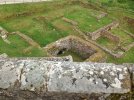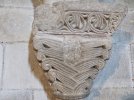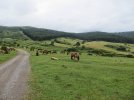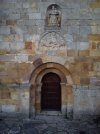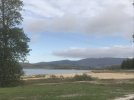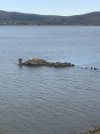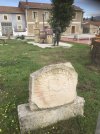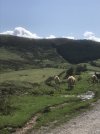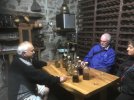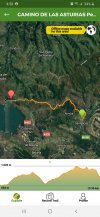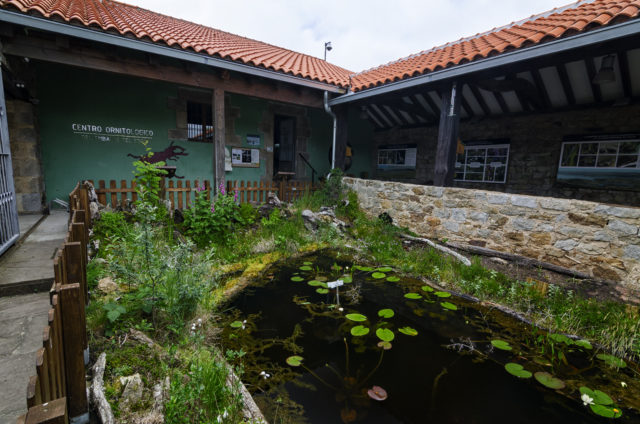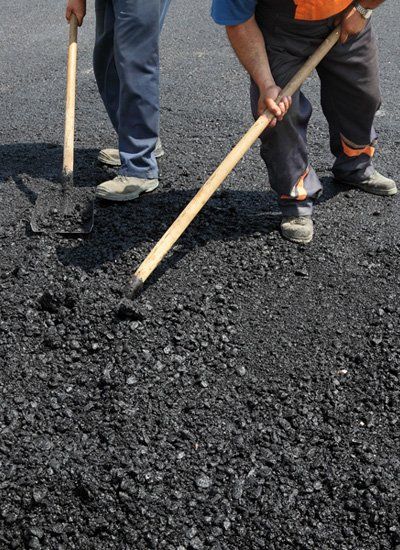As promised, today I am starting a planning thread for the Camino Olvidado.
There are many good sources for the Olvidado.
Ender’s guide in English.
The Camino Olvidado website with stages, tracks, and pictures.
This forum’s sub-forum on the Olvidado.
Another Olvidado website, in Spanish, which is connected somehow to Adolfo in Nava de Ordunte, I think (but am not sure). I noticed that Susanna‘s and my feeble attempt at a guide in 2014 is linked on the site, and I think that Adolfo must have been responsible for that.
Ray and Rosa have a section on their website, too.
So it’s pretty clear that this thread will not provide new information, but hopefully it will let individual forum members focus stage by stage to see if and how they can fit their walking preferences to this glorious camino.
And another disclaimer — The Olvidado/Invierno combination is my all time favorite camino. So don’t expect balanced and objective information from this peregrina!
As always, the first task is to get yourself to Bilbao and get oriented. There’s a great airport bus, but of course that’s to be expected since you are in Spain. I don’t believe the tram goes to the airport, but the bus will drop you off at the station if you are going to a place served by the tram. But I just got off at the main stop and crossed the river to get to the old town where my pensión was.
Bilbao, in my mind, is kind of like the Pittsburgh of Spain. Back in the 1970s when I was studying in Spain, it was a place to be avoided — dirty, polluted, industrial. Then came the EU with its money for environmental cleanup, then came the Guggenheim, and voilà, Bilbao was reborn. Just like Pittsburgh! (minus the EU and the Guggenheim). I assume there will be lots of first hand recommendations of where to stay in Bilbao. I have stayed in a couple of places on different caminos.
My two favorites — I like the Pensión de la Fuente for its central location, family run and homey feel. Another very similar place where I’ve stayed a few times is the Iturrienea Ostatua. Both are well located in the old town in old buildings with ancient elevators, creaky wood floors, large clanging metal keys.
There is no shortage of things to do in Bilbao. Walking around the casco histórico, the cathedral, and the late 18th early 19th century gracious modernist neighborhoods (reminiscent of the Serrano area in Madrid, IMO) are all not to be missed. And you really should allow yourself the joy of having pintxos in the old town, as many times as possible. They are AMAZING!!!!!
The Guggenheim, well of course you have to see it, it is on the river and the promenade is one of those unmissible snapshots of Spanish life. Whether you want to go inside is up to you. I have been inside twice, and that’s more than enough for me. The room with a special “sunflowers” exhibit was a series of vases with sunflowers that had been dipped in lead, that pretty well sums it up for me, but then I am not a well educated contemporary art person. The Museo de Bellas Artes is much more my style. It is close to the Guggenheim, and spans a wide range of styles. The link I posted shows you some of the “obras maestras,” most famous works.
So for those of you who are new to this format, what we typically do is invite comments and questions about the post of the day. I will be back in three days to post the first walking stage, but for now we should focus on the beautiful city of Bilbao.
A few self-explanatory pictures. And can I suggest that people post thumbnails? You can click on the thumbnail to enlarge it, but that is a big help for people with slower internet.
Back in a few days with some actual camino walking going on. Buen camino, Laurie
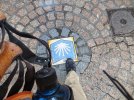
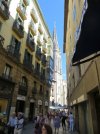

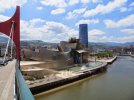
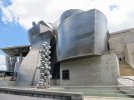
There are many good sources for the Olvidado.
Ender’s guide in English.
The Camino Olvidado website with stages, tracks, and pictures.
This forum’s sub-forum on the Olvidado.
Another Olvidado website, in Spanish, which is connected somehow to Adolfo in Nava de Ordunte, I think (but am not sure). I noticed that Susanna‘s and my feeble attempt at a guide in 2014 is linked on the site, and I think that Adolfo must have been responsible for that.
Ray and Rosa have a section on their website, too.
So it’s pretty clear that this thread will not provide new information, but hopefully it will let individual forum members focus stage by stage to see if and how they can fit their walking preferences to this glorious camino.
And another disclaimer — The Olvidado/Invierno combination is my all time favorite camino. So don’t expect balanced and objective information from this peregrina!
As always, the first task is to get yourself to Bilbao and get oriented. There’s a great airport bus, but of course that’s to be expected since you are in Spain. I don’t believe the tram goes to the airport, but the bus will drop you off at the station if you are going to a place served by the tram. But I just got off at the main stop and crossed the river to get to the old town where my pensión was.
Bilbao, in my mind, is kind of like the Pittsburgh of Spain. Back in the 1970s when I was studying in Spain, it was a place to be avoided — dirty, polluted, industrial. Then came the EU with its money for environmental cleanup, then came the Guggenheim, and voilà, Bilbao was reborn. Just like Pittsburgh! (minus the EU and the Guggenheim). I assume there will be lots of first hand recommendations of where to stay in Bilbao. I have stayed in a couple of places on different caminos.
My two favorites — I like the Pensión de la Fuente for its central location, family run and homey feel. Another very similar place where I’ve stayed a few times is the Iturrienea Ostatua. Both are well located in the old town in old buildings with ancient elevators, creaky wood floors, large clanging metal keys.
There is no shortage of things to do in Bilbao. Walking around the casco histórico, the cathedral, and the late 18th early 19th century gracious modernist neighborhoods (reminiscent of the Serrano area in Madrid, IMO) are all not to be missed. And you really should allow yourself the joy of having pintxos in the old town, as many times as possible. They are AMAZING!!!!!
The Guggenheim, well of course you have to see it, it is on the river and the promenade is one of those unmissible snapshots of Spanish life. Whether you want to go inside is up to you. I have been inside twice, and that’s more than enough for me. The room with a special “sunflowers” exhibit was a series of vases with sunflowers that had been dipped in lead, that pretty well sums it up for me, but then I am not a well educated contemporary art person. The Museo de Bellas Artes is much more my style. It is close to the Guggenheim, and spans a wide range of styles. The link I posted shows you some of the “obras maestras,” most famous works.
So for those of you who are new to this format, what we typically do is invite comments and questions about the post of the day. I will be back in three days to post the first walking stage, but for now we should focus on the beautiful city of Bilbao.
A few self-explanatory pictures. And can I suggest that people post thumbnails? You can click on the thumbnail to enlarge it, but that is a big help for people with slower internet.
Back in a few days with some actual camino walking going on. Buen camino, Laurie











